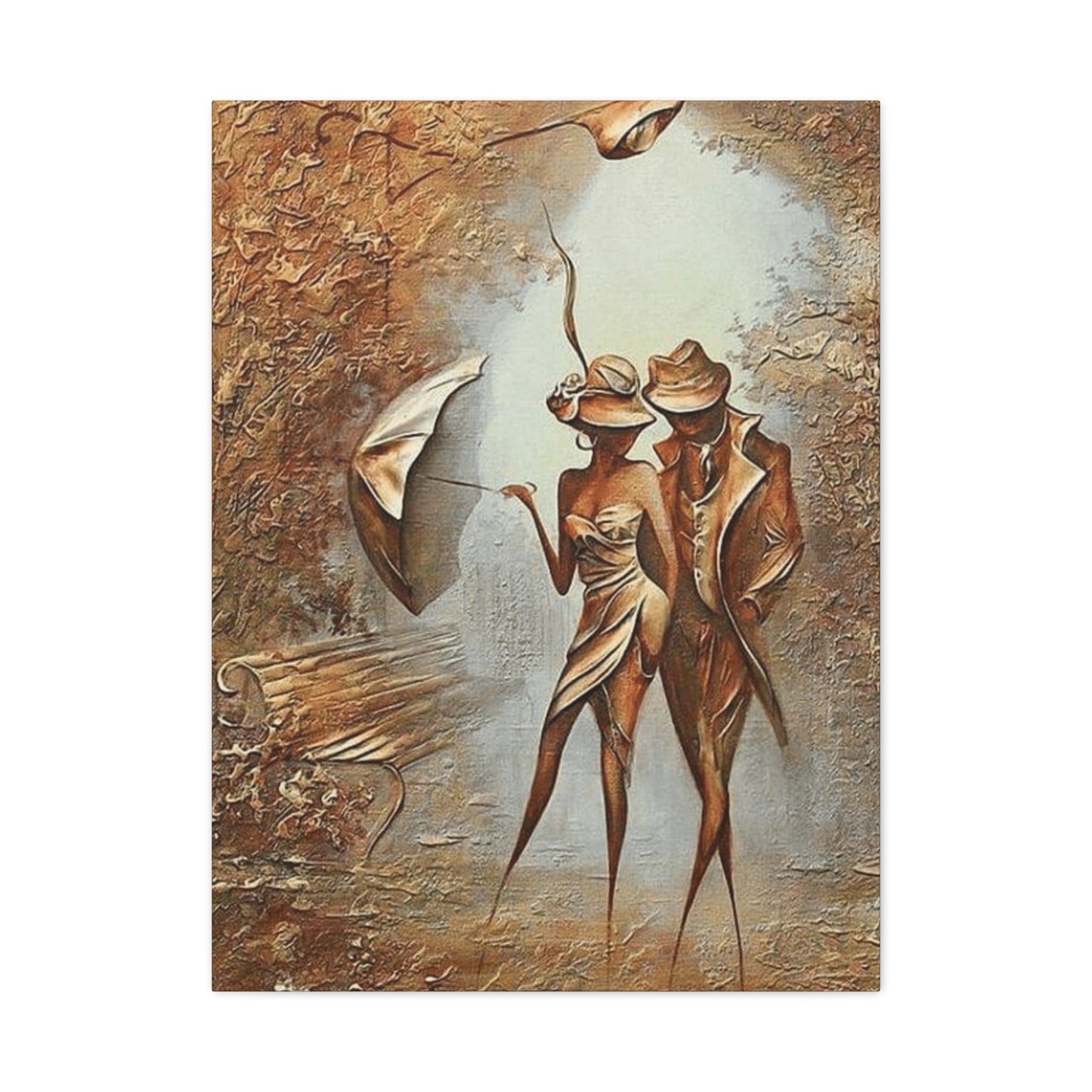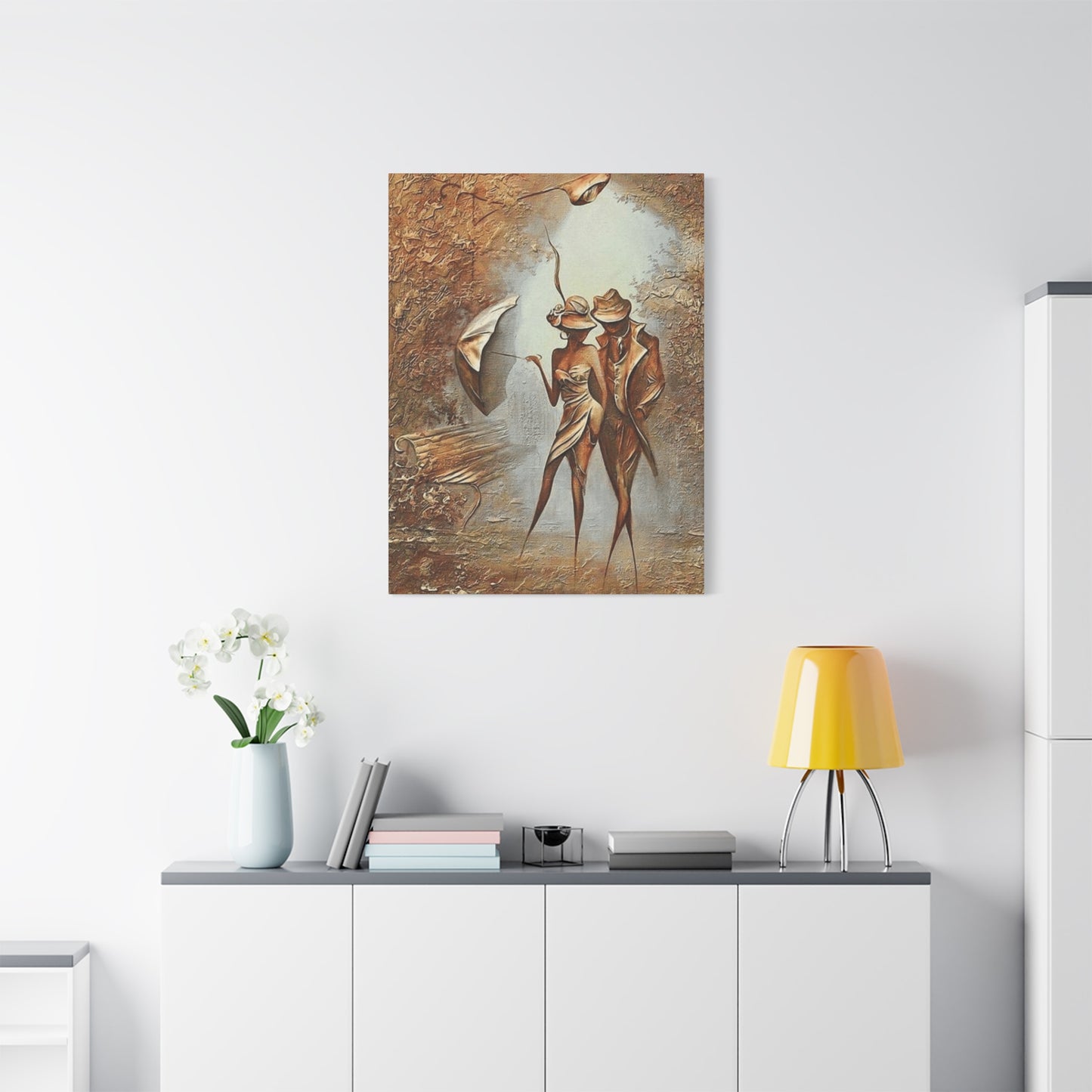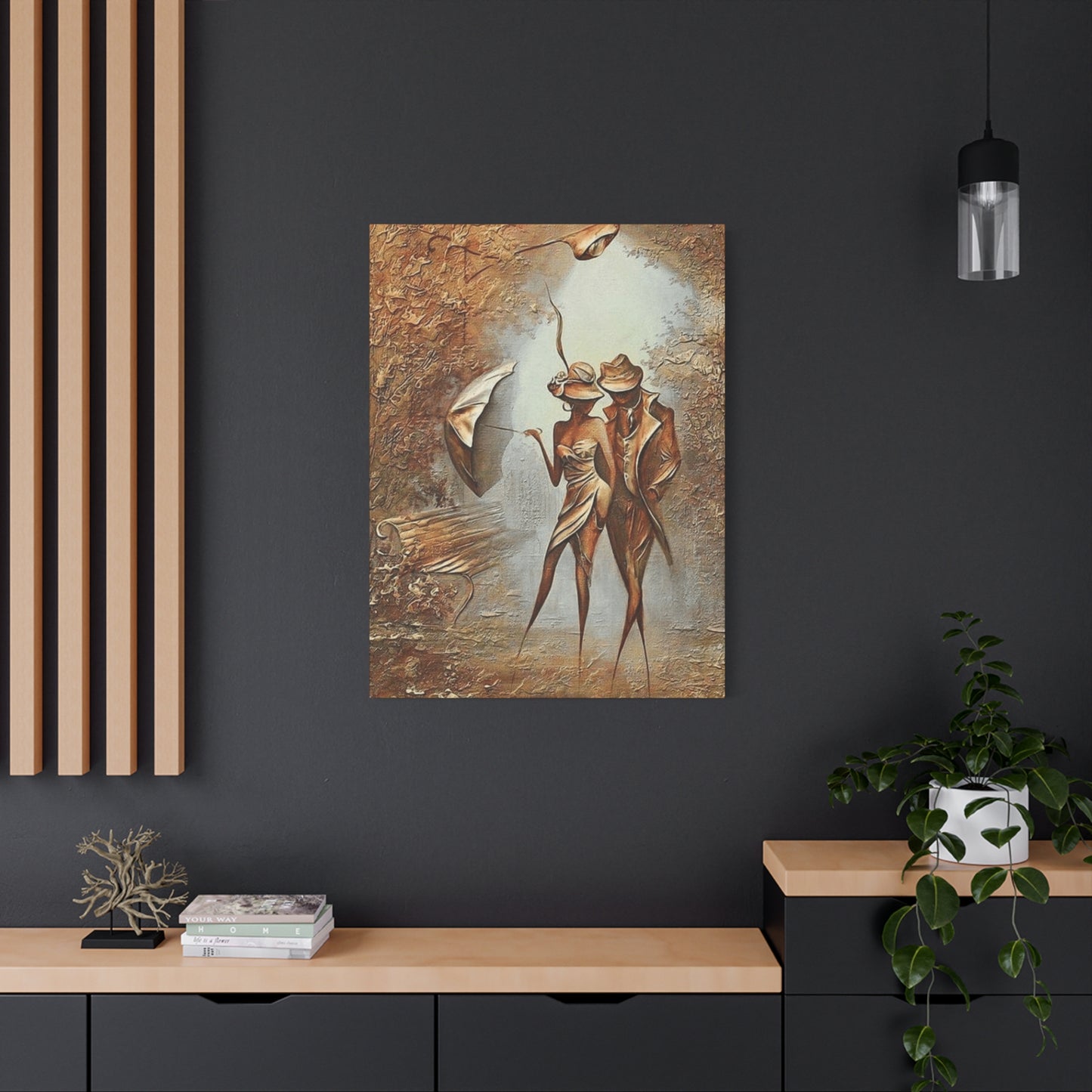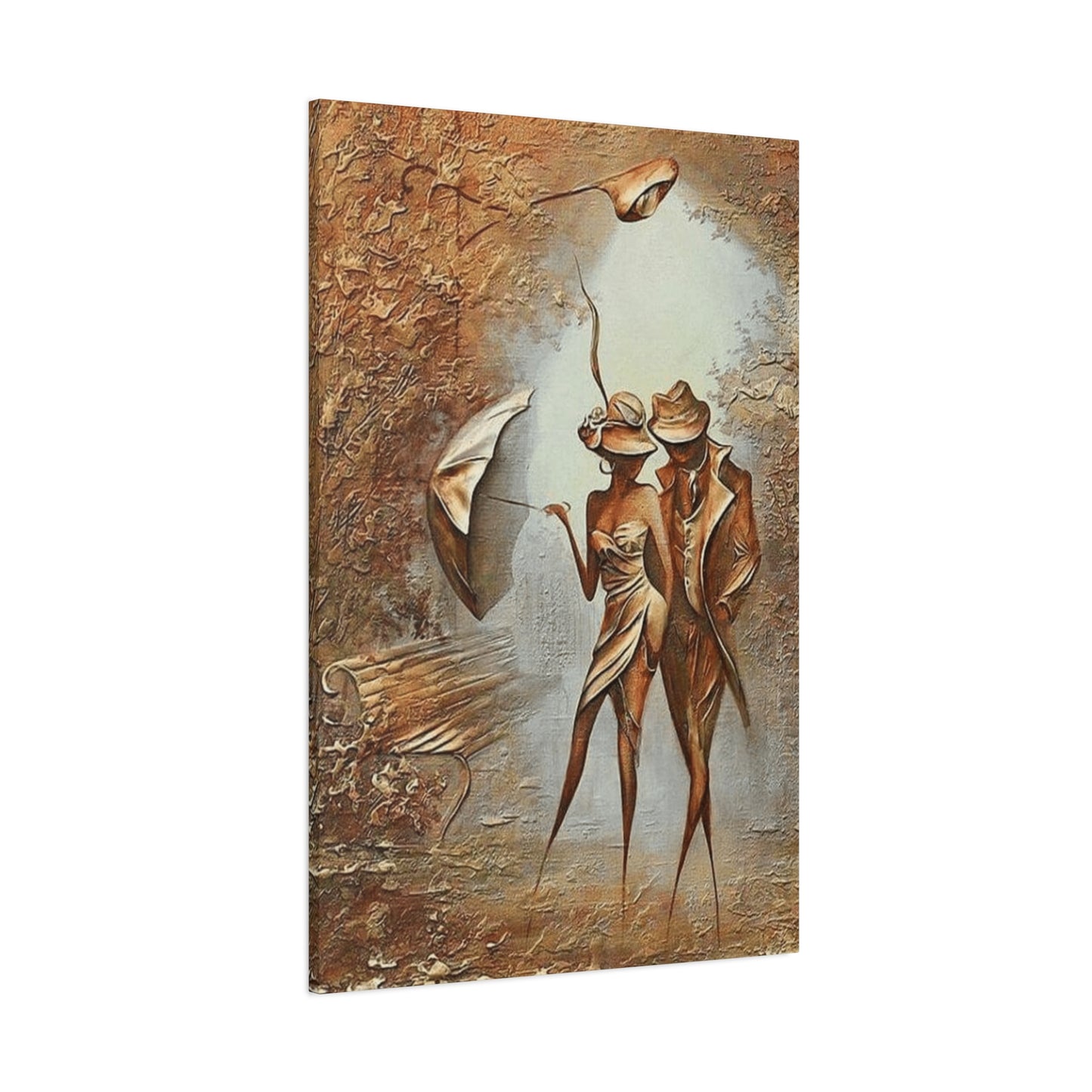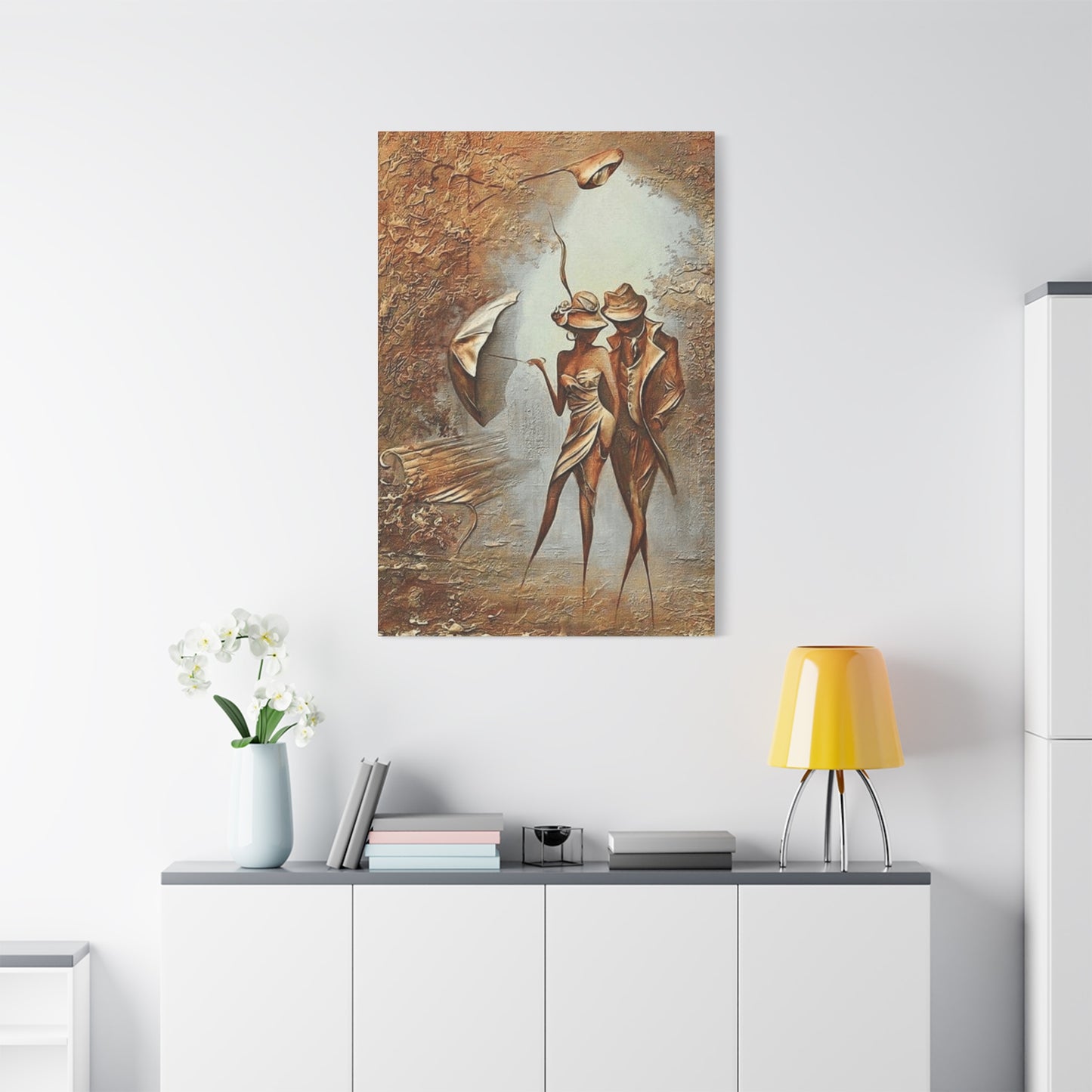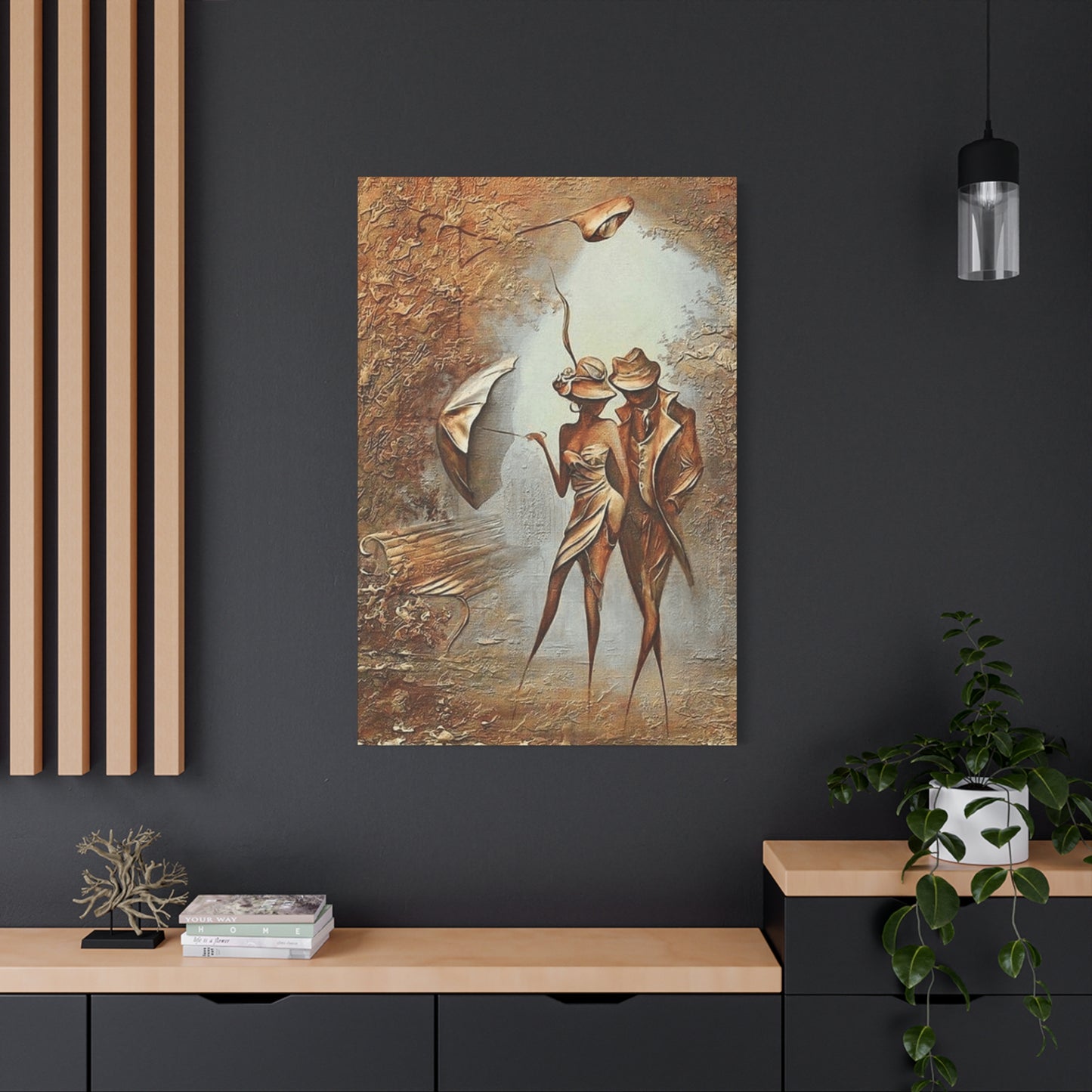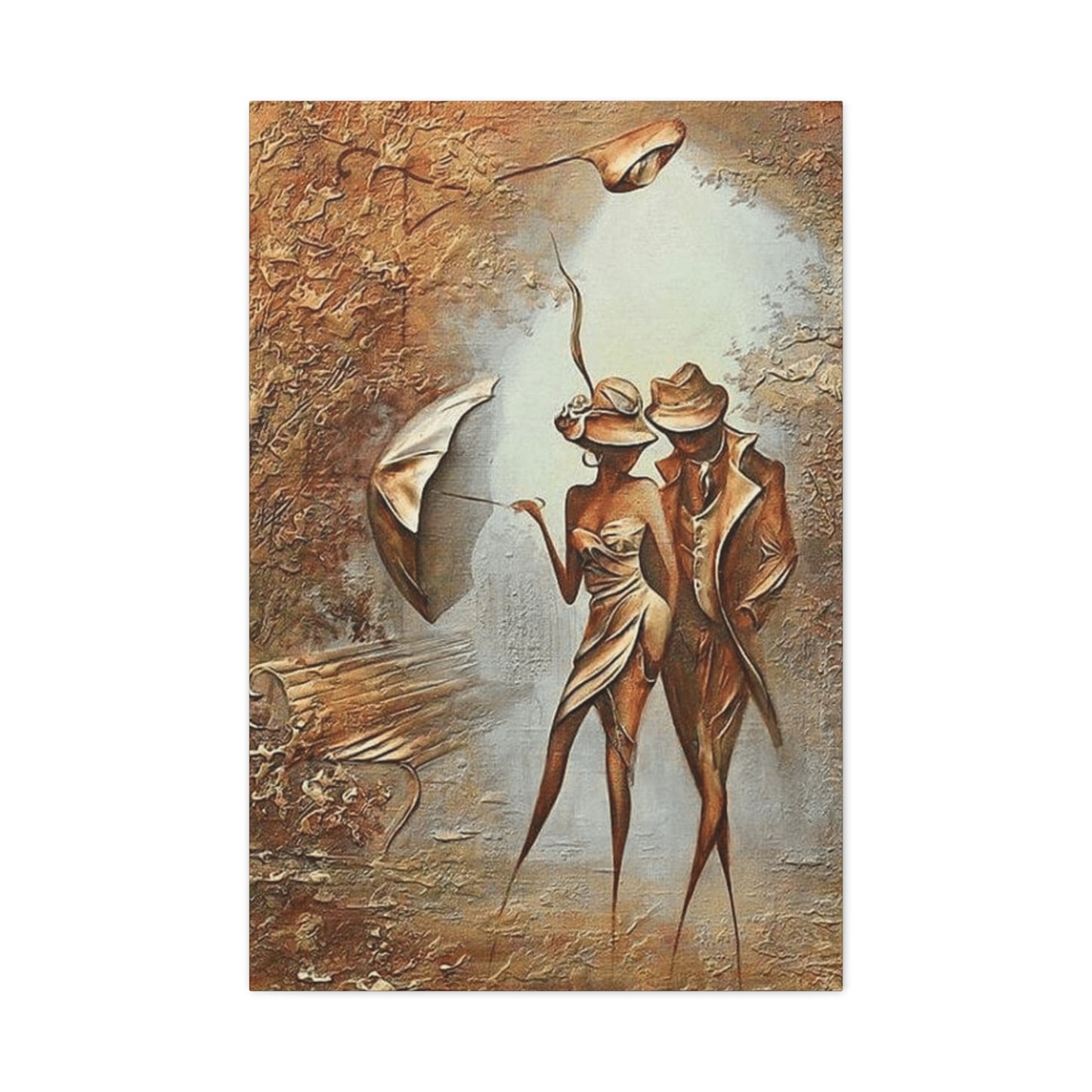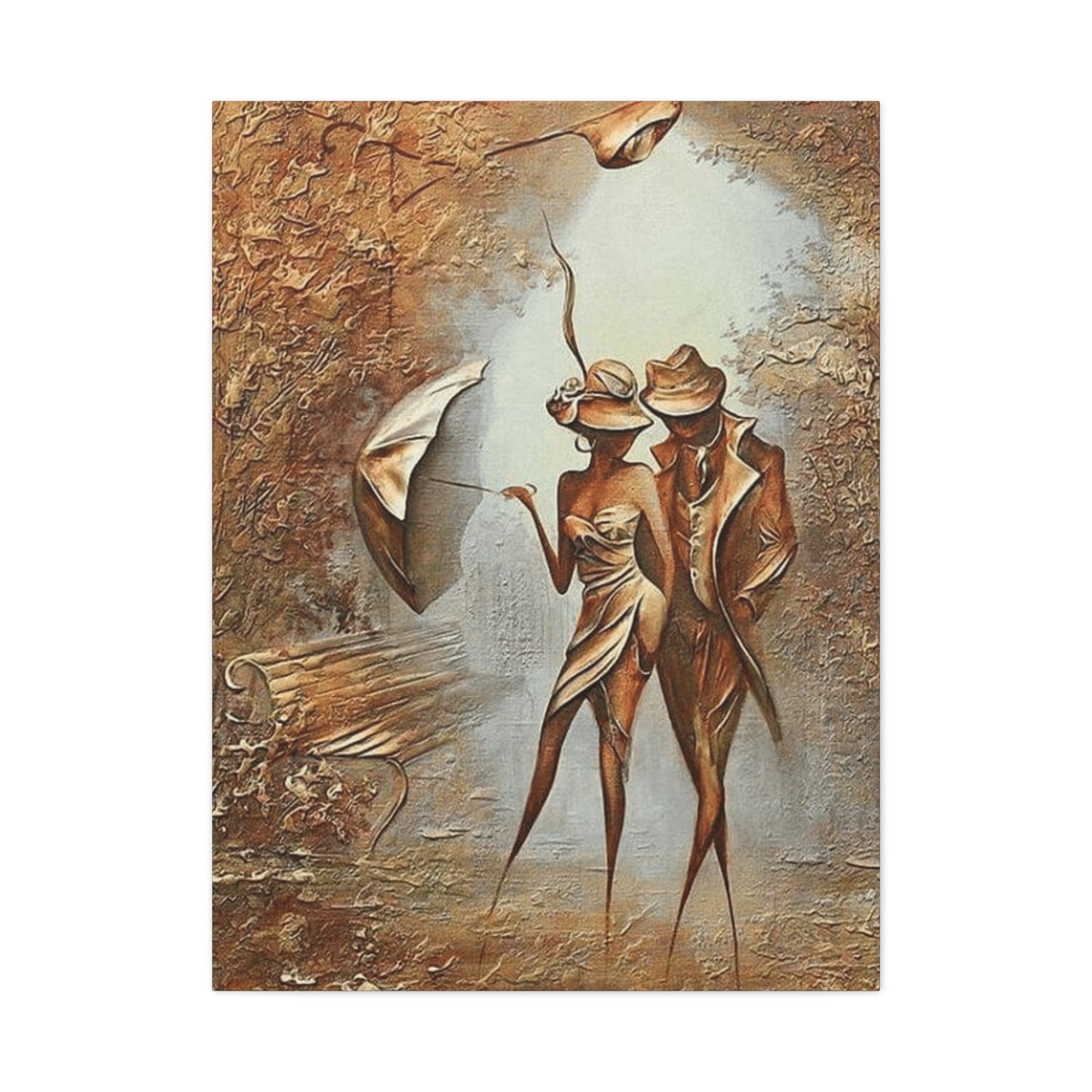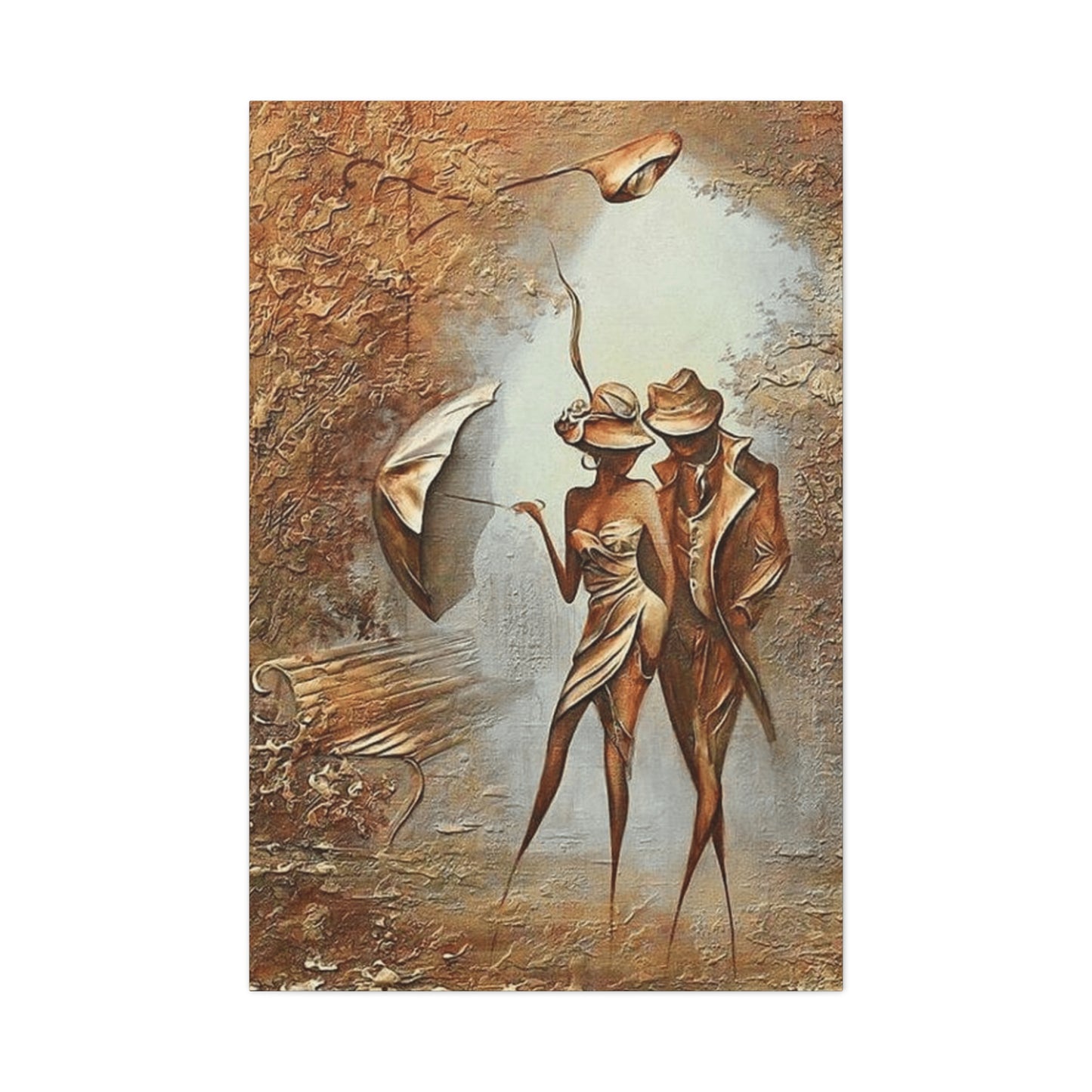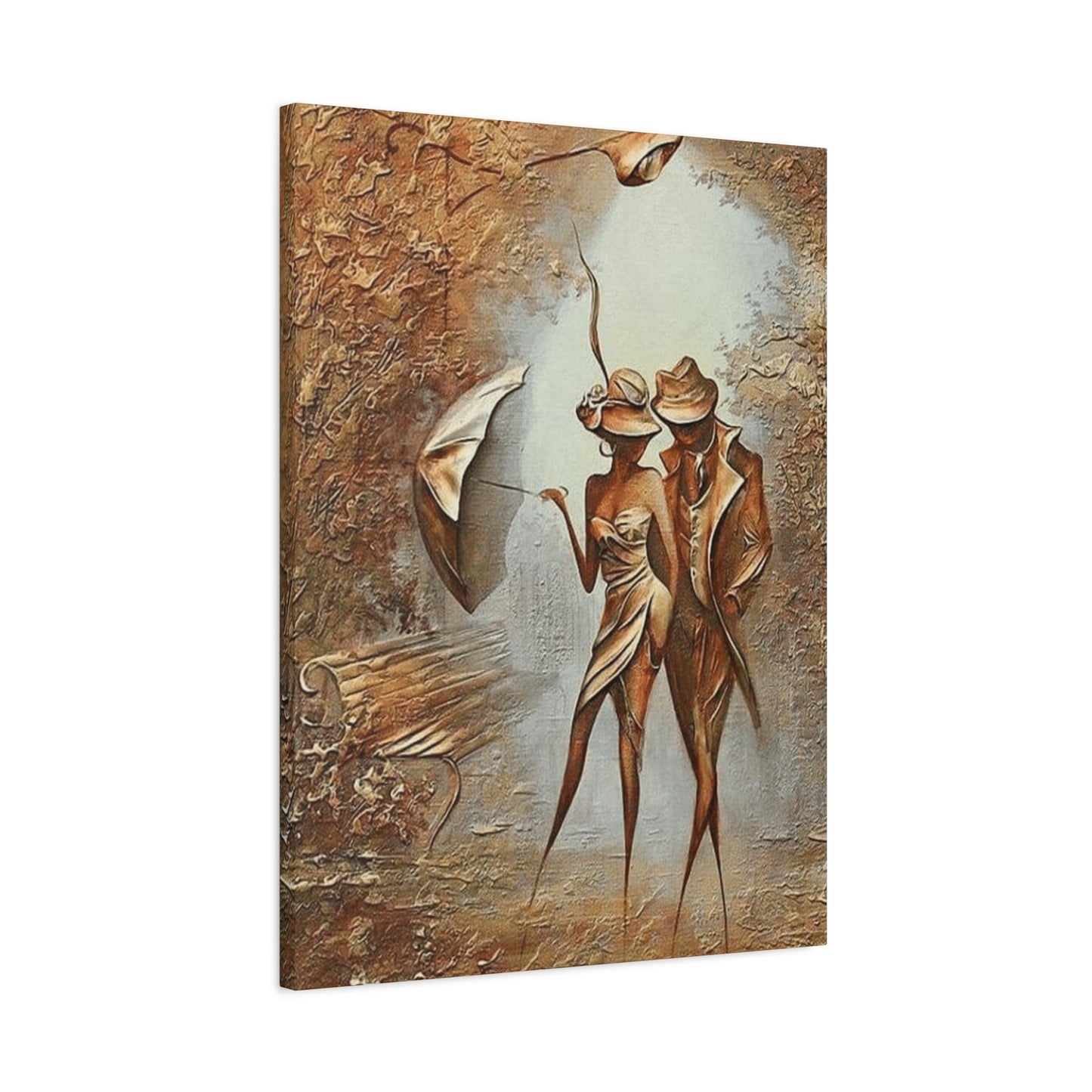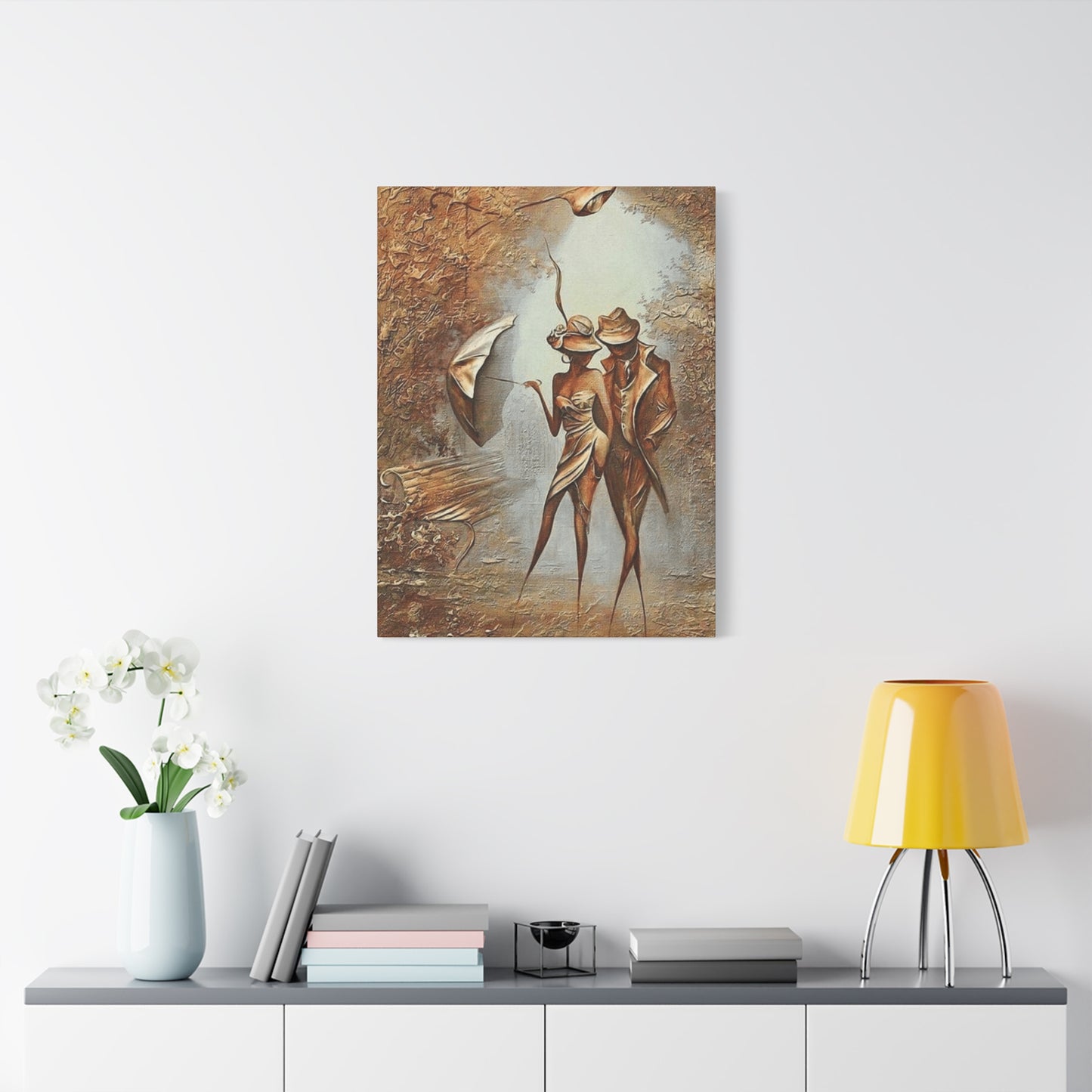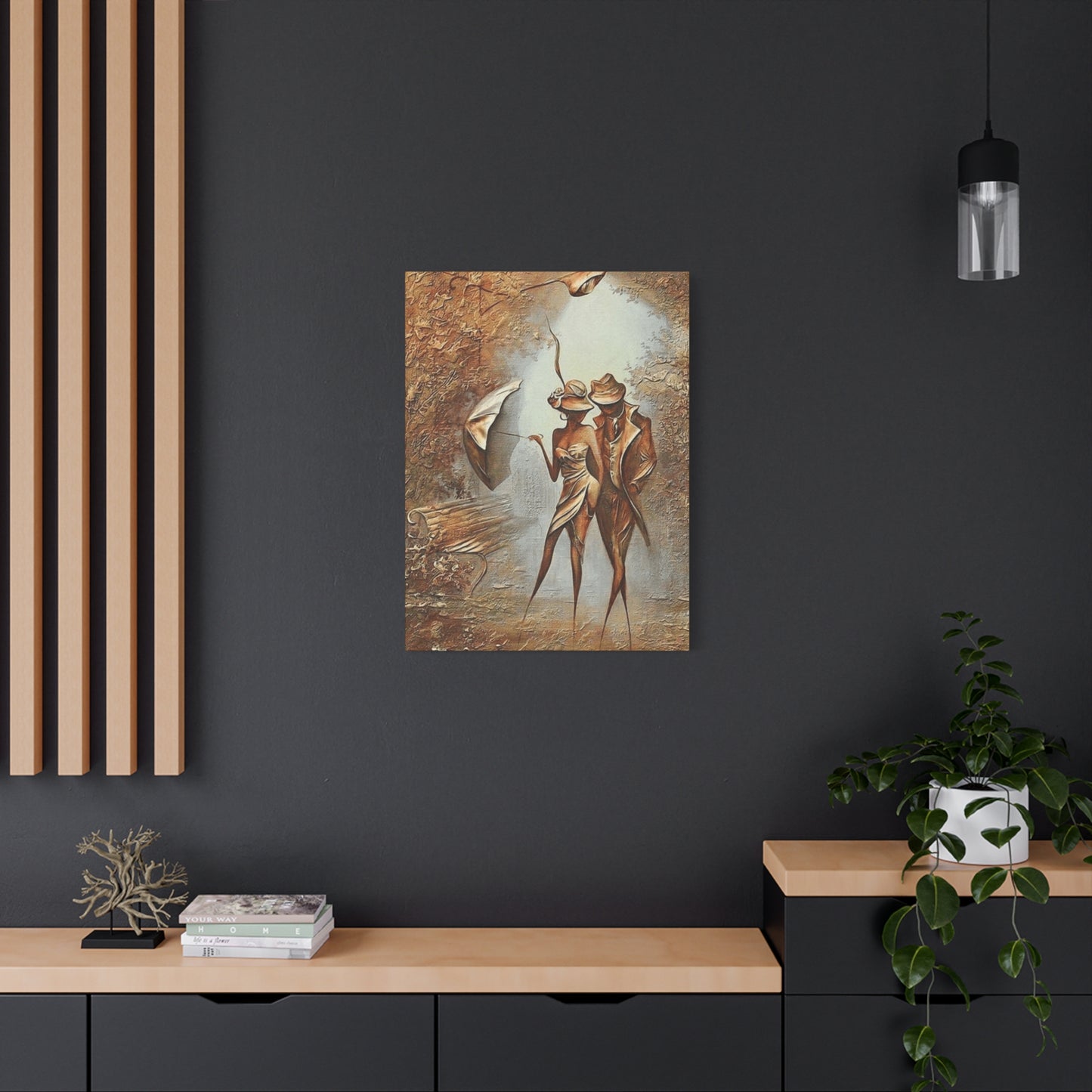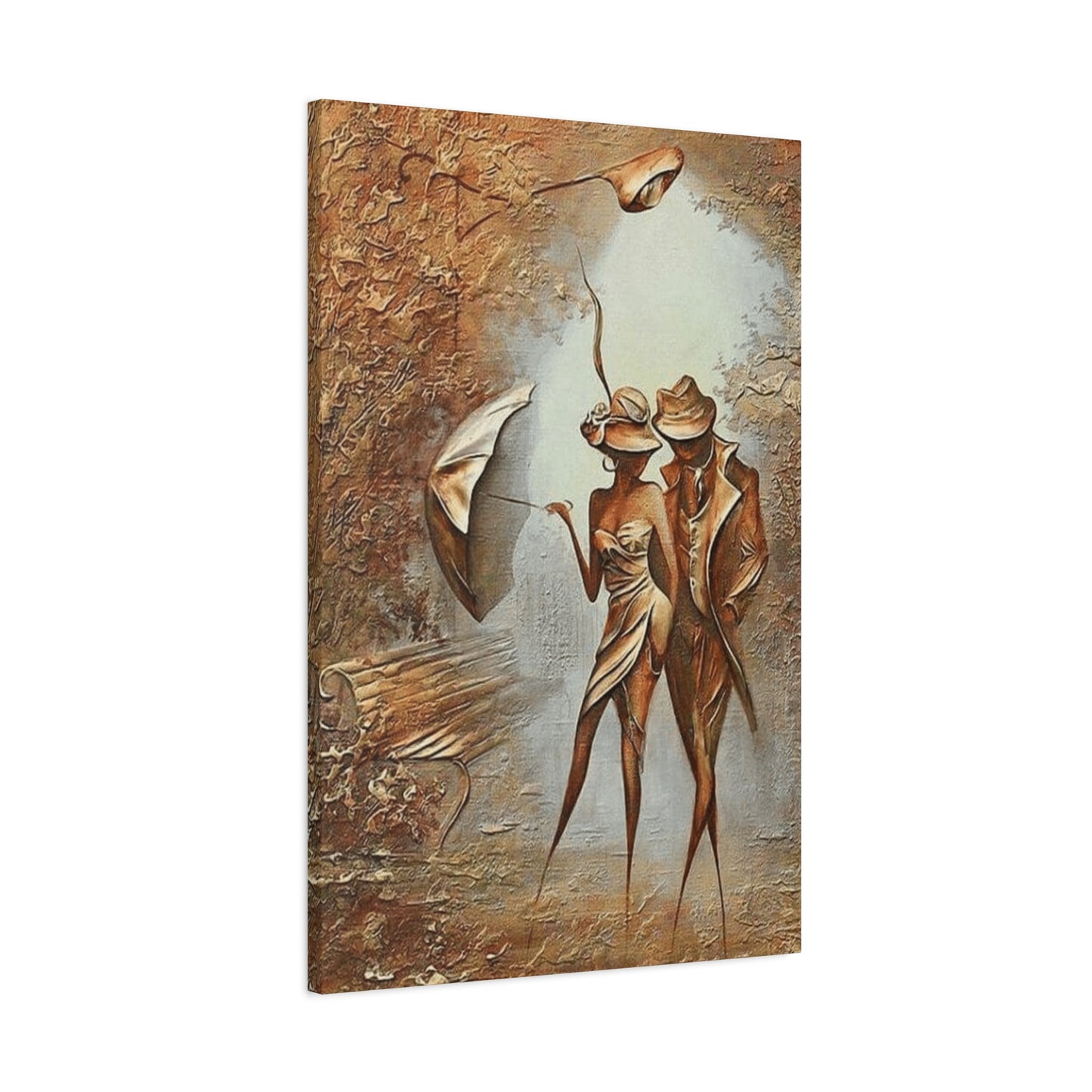Mixing Gold Wall Art with Neutral Palettes for a Balanced Look
The allure of metallic accents in home decoration has captivated homeowners and designers for centuries, with golden elements holding a particularly special place in creating luxurious and sophisticated living environments. When it comes to enhancing your home's aesthetic appeal, few decorative elements can match the transformative power of thoughtfully chosen golden metallic pieces that grace your walls with their luminous presence and timeless elegance.
Golden metallic decorative pieces serve as powerful focal points that can elevate any room from ordinary to extraordinary, creating visual interest and adding layers of sophistication that speak to refined taste and artistic sensibility. These stunning decorative elements work harmoniously with various design styles, from contemporary minimalist approaches to more traditional and ornate aesthetic preferences, making them versatile additions to any home's decorative scheme.
The strategic placement of golden metallic pieces throughout your living areas creates a cohesive visual narrative that ties different rooms together while maintaining individual character and charm. Whether you prefer subtle accents that whisper elegance or bold statement pieces that command attention, golden metallic decorative elements offer endless possibilities for personal expression and creative home styling.
Analyzing Metallic Finishes: Gold Leaf Versus Paint Applications
The debate between authentic gold leaf applications and metallic paint alternatives represents one of the most significant decisions when selecting golden decorative pieces for your home. Each approach offers distinct advantages and considerations that can significantly impact both the visual outcome and long-term satisfaction with your decorative investment.
Gold leaf applications provide an unmatched level of authenticity and visual depth that synthetic alternatives struggle to replicate. The genuine metallic surface catches and reflects light in complex ways, creating subtle variations in tone and luminosity that change throughout the day as natural light shifts and moves across the surface. This dynamic quality gives gold leaf pieces a living, breathing character that adds sophisticated movement to your decorative scheme.
The application process for gold leaf requires considerable skill and patience, with artisans carefully laying each delicate sheet onto specially prepared surfaces using traditional techniques that have been refined over centuries. This labor-intensive process contributes to the higher cost of gold leaf pieces but results in a finish of exceptional quality and longevity that can maintain its beauty for decades with proper care.
Metallic paint alternatives have evolved significantly in recent years, with manufacturers developing increasingly sophisticated formulations that closely mimic the appearance of genuine gold while offering practical advantages in terms of cost and durability. High-quality metallic paints incorporate fine metallic particles that create convincing reflective properties, though they typically lack the complex depth and variation found in genuine gold leaf applications.
The versatility of metallic paints makes them particularly appealing for larger decorative pieces or budget-conscious projects where the cost of gold leaf would be prohibitive. Modern metallic paint formulations offer excellent adhesion properties and resistance to fading, making them suitable for pieces that will receive regular handling or exposure to varying environmental conditions.
When evaluating the longevity of different metallic finishes, gold leaf generally demonstrates superior resistance to tarnishing and degradation, particularly when properly sealed and maintained. The pure metallic content of gold leaf creates a stable surface that maintains its lustrous appearance over time, while some metallic paints may experience gradual fading or color shift when exposed to ultraviolet light or environmental factors.
The choice between gold leaf and metallic paint applications often depends on the specific requirements of your decorative project, including budget considerations, the intended location of the piece, and your personal preferences regarding authenticity and visual impact. Both options can create stunning results when properly executed and thoughtfully integrated into your overall decorative scheme.
Maintenance requirements differ significantly between gold leaf and metallic paint finishes, with gold leaf generally requiring gentler cleaning methods and more careful handling to preserve its delicate surface. Metallic paint finishes typically offer greater durability for high-traffic areas or pieces that may require frequent cleaning or adjustment.
Strategic Placement: Accent Pieces Versus Statement Elements
The strategic decision between incorporating subtle golden accents and bold statement pieces fundamentally shapes the character and visual impact of your decorative scheme. This choice influences not only the immediate aesthetic appeal of individual rooms but also the overall flow and cohesion of your home's decorative narrative.
Small golden accent pieces offer sophisticated opportunities to introduce metallic elements without overwhelming existing decorative themes or competing with other focal points in your living areas. These carefully chosen accents might include delicate botanical prints with golden highlights, miniature sculptural elements, or subtle geometric patterns that catch light and add visual interest without dominating the visual landscape.
The power of accent pieces lies in their ability to create visual connections between different elements within a room, tying together color schemes and reinforcing design themes through strategic repetition and placement. A series of small golden accents distributed thoughtfully throughout a living area can create rhythm and movement that guides the eye naturally around the room while maintaining visual balance.
Statement pieces, conversely, serve as dramatic focal points that immediately capture attention and establish the decorative hierarchy within a room. These bold elements might include large-scale abstract compositions, ornate mirrors with elaborate golden frames, or sculptural installations that command presence and create conversation-worthy visual drama.
The selection of statement pieces requires careful consideration of scale, proportion, and visual weight to ensure they enhance rather than overwhelm your living areas. A well-chosen statement piece can anchor an entire room's decorative scheme while providing a sophisticated backdrop for smaller decorative elements and furniture arrangements.
Balancing accent pieces with statement elements creates layered visual complexity that adds depth and interest to your decorative scheme. This approach allows for the creation of multiple focal points that work together harmoniously while providing opportunities for seasonal updates and decorative evolution over time.
The placement of both accent pieces and statement elements should consider natural traffic patterns and sight lines within your home, ensuring that these decorative investments receive appropriate visual attention while contributing to the overall functionality and livability of your living areas. Strategic placement near natural light sources can maximize the reflective properties of golden metallic finishes, creating dynamic visual effects throughout the day.
Consider the relationship between your chosen pieces and existing architectural features, using golden elements to highlight positive aspects of your home's structure while potentially drawing attention away from less desirable elements. This strategic approach transforms decorative pieces from simple ornaments into functional elements of your home's overall design strategy.
Illumination Effects: How Light Transforms Golden Metallic Elements
The interaction between lighting and golden metallic decorative pieces represents one of the most crucial yet often overlooked aspects of successful decorative planning. The way light plays across metallic surfaces can dramatically alter the appearance, mood, and impact of your carefully chosen golden elements throughout different times of day and seasonal variations.
Natural daylight provides the most dynamic and ever-changing illumination for golden metallic pieces, creating subtle variations in tone and intensity that bring these decorative elements to life with organic movement and vitality. Morning light tends to cast cooler tones that can make golden elements appear more subdued and sophisticated, while afternoon sunlight brings out the warm, rich qualities that make gold such an appealing choice for home decoration.
The directional quality of natural light creates interesting shadows and highlights on textured metallic surfaces, emphasizing dimensional qualities and adding visual complexity that flat surfaces cannot achieve. This interplay between light and shadow becomes particularly dramatic with pieces that incorporate raised elements, intricate patterns, or varied surface textures that catch and redirect light in multiple directions.
Artificial lighting options offer greater control over the presentation of your golden decorative pieces, allowing you to emphasize specific qualities and create desired mood effects throughout your living areas. Warm-toned LED fixtures can enhance the inherent warmth of golden elements, while cooler lighting temperatures can create interesting contrasts that highlight the metallic qualities without overwhelming the visual palette.
Strategic positioning of accent lighting can transform even modest golden pieces into dramatic focal points that command attention and create sophisticated ambiance. Picture lights, track lighting, or carefully placed table lamps can direct illumination precisely where needed to maximize the visual impact of your metallic decorative investments.
The quality of light sources significantly affects how golden metallic finishes appear, with higher-quality LED fixtures providing more accurate color rendering that preserves the true character of your decorative pieces. Poor-quality lighting can distort colors and create unflattering effects that diminish the beauty and investment value of your golden elements.
Layered lighting approaches that combine ambient, task, and accent illumination create the most sophisticated and flexible environment for displaying golden metallic pieces. This comprehensive lighting strategy allows you to adjust the prominence and character of your decorative elements based on different activities, times of day, or desired mood effects.
Consider the reflective properties of golden surfaces when planning room lighting, as these elements can help distribute light throughout your living areas while reducing the need for additional fixtures. This functional benefit adds practical value to your decorative investment while contributing to energy efficiency and overall lighting effectiveness.
The seasonal variation in natural light quality and duration affects how golden elements appear throughout the year, with winter's cooler, limited daylight creating different visual effects than summer's abundant warm illumination. Understanding these variations helps you appreciate the dynamic character of metallic decorative pieces and plan seasonal decorative adjustments accordingly.
Harmonious Color Coordination: Pairing Gold with Neutral Palettes
The art of successfully integrating golden metallic elements with neutral color schemes requires careful consideration of undertones, proportions, and visual balance to create harmonious and sophisticated decorative results. Neutral palettes provide an ideal backdrop for golden accents, allowing these metallic elements to shine without competing with bold colors or complex patterns that might diminish their visual impact.
Warm neutral foundations, including cream, ivory, and soft beige tones, create natural partnerships with golden metallic elements that feel cohesive and intentional. These color relationships echo the warm undertones found in most golden finishes, creating seamless visual transitions that feel organic rather than forced or artificial.
Cool neutral backgrounds, such as soft grays, pale blues, and crisp whites, offer striking contrast opportunities that can make golden elements appear more vibrant and dramatic. This contrast relationship creates dynamic visual tension that adds energy and interest to otherwise calm and subdued color schemes.
The proportion of golden elements within neutral schemes significantly affects the overall visual impact and character of your decorative approach. Subtle golden accents scattered throughout predominantly neutral environments create sophisticated shimmer and visual interest without overwhelming the serene qualities that make neutral palettes so appealing for relaxation and daily living.
Texture plays a crucial role in successful color coordination, with varied surface treatments in neutral tones providing visual complexity that complements rather than competes with golden metallic finishes. Incorporating natural textures through fabrics, wood elements, and stone materials creates layered sophistication that enhances the luxury appeal of golden decorative pieces.
Consider the psychological effects of different neutral and golden combinations when planning your decorative scheme. Warm combinations tend to create cozy, inviting atmospheres that encourage relaxation and social interaction, while cooler combinations can feel more formal and sophisticated, suitable for entertaining or professional home environments.
The evolution of neutral color trends affects how golden elements integrate with contemporary decorative approaches. Current preferences for complex neutral tones with subtle color undertones provide rich opportunities for creative golden accent integration that feels fresh and contemporary while maintaining timeless appeal.
Seasonal decorative variations become particularly effective when working with neutral and golden color combinations, as the stable neutral foundation allows for temporary additions of seasonal colors and textures without disrupting the core decorative scheme. This flexibility makes neutral and golden combinations practical choices for homeowners who enjoy updating their decorative elements throughout the year.
Contemporary Versus Traditional Applications
The versatility of golden metallic decorative elements allows them to enhance both contemporary minimalist environments and traditional ornate settings, though the approach and selection criteria differ significantly between these contrasting aesthetic philosophies. Understanding these differences helps ensure your golden pieces integrate successfully with your preferred decorative style.
Modern applications of golden elements typically emphasize clean lines, geometric forms, and sophisticated simplicity that aligns with contemporary design principles. These pieces often feature sleek surfaces, minimal ornamentation, and architectural qualities that complement the structural emphasis found in modern home environments.
Contemporary golden pieces frequently incorporate mixed materials, combining metallic finishes with glass, acrylic, or other modern materials to create visually interesting contrasts and textural variety. This material mixing reflects current design trends that celebrate the beauty of different substances working together harmoniously.
Traditional decorative approaches welcome more ornate and elaborate golden elements that complement classical architectural features and formal decorative schemes. These pieces might include intricate frames, detailed sculptural elements, and historical motifs that reference classical design traditions and artistic heritage.
The scale and proportion considerations differ between contemporary and traditional applications, with modern approaches typically favoring larger, simpler forms that create bold visual impact through size and placement rather than ornate detail. Traditional settings can accommodate more complex compositions with multiple smaller elements that work together to create rich visual tapestries.
Color relationships also vary between contemporary and traditional golden applications. Modern schemes often pair golden elements with stark contrasts and monochromatic backgrounds, while traditional approaches embrace richer color palettes that include complementary warm tones and complex layered relationships.
The integration of technology and modern conveniences affects how golden elements function in contemporary settings, with pieces often serving multiple purposes or incorporating hidden functional elements that align with modern lifestyle requirements. Traditional applications focus more purely on aesthetic and symbolic functions without contemporary functional considerations.
Historical accuracy becomes important in traditional applications, where golden elements should reflect authentic period characteristics and appropriate cultural references. Contemporary applications enjoy greater freedom to reinterpret and modernize traditional golden motifs according to personal preferences and current design trends.
The longevity of different stylistic approaches affects investment decisions, with contemporary golden pieces potentially facing obsolescence as design trends evolve, while traditional pieces often maintain their appeal across multiple decades due to their connection to enduring classical aesthetic principles.
Creative Project Ideas: Handmade Golden Accents
The satisfaction of creating personalized golden decorative pieces through do-it-yourself projects combines creative expression with cost-effective decorative solutions that can be tailored precisely to your specific needs and aesthetic preferences. These handmade approaches offer unique opportunities to develop one-of-a-kind pieces that reflect your personal style while building valuable crafting skills.
Leaf application projects provide accessible entry points into golden decorative creation, using readily available gold leaf sheets and adhesive products to transform ordinary surfaces into sophisticated metallic accents. These projects might include picture frames, mirror borders, or small decorative objects that can serve as learning experiences for more ambitious future projects.
Metallic paint techniques offer versatile creative possibilities for crafters comfortable with brush and spray applications. Modern metallic paint formulations provide excellent coverage and durability, making them suitable for larger projects or pieces that will receive regular handling throughout their functional life.
Stencil applications allow for precise pattern creation and repetitive design elements that can create sophisticated geometric or botanical motifs without requiring advanced artistic skills. These techniques can transform plain surfaces into elegant golden accents that appear professionally created when executed with patience and attention to detail.
Mixed media approaches combine golden metallic elements with other materials such as fabric, paper, or natural elements to create unique textural compositions that reflect personal creativity and individual aesthetic preferences. These projects offer opportunities to incorporate meaningful personal elements or family heirlooms into new decorative pieces.
Seasonal project variations allow crafters to create golden accents specifically designed for holiday or seasonal decoration, providing opportunities to develop specialized pieces that can be stored and reused annually. These seasonal projects often become treasured family traditions that accumulate sentimental value over time.
The learning curve associated with different DIY techniques varies considerably, with some approaches requiring minimal experience while others demand significant skill development and practice. Beginning crafters should start with simpler projects and gradually advance to more complex techniques as confidence and abilities develop.
Safety considerations become particularly important when working with adhesives, metallic paints, and finishing products that may contain volatile compounds or require ventilation during application. Proper workspace preparation and protective equipment ensure safe crafting experiences that can be enjoyed without health concerns.
Budget planning for DIY golden projects should include not only material costs but also tool investments that may be required for specific techniques. Quality tools often produce better results and prove more economical over multiple projects than repeatedly purchasing inexpensive alternatives that may not perform adequately.
Entrance and Corridor Enhancement Strategies
The strategic placement of golden metallic decorative elements in entryways and hallways creates powerful first impressions while addressing the unique decorative challenges presented by these transitional areas. These locations offer excellent opportunities to establish your home's decorative character while providing practical benefits such as improved lighting reflection and visual interest in potentially mundane passages.
Entryway applications of golden elements serve multiple functions, creating welcoming focal points that immediately communicate your attention to decorative detail while providing opportunities to introduce the golden theme that may continue throughout your home's public areas. These pieces should be selected and positioned to create positive psychological effects for both residents and visitors.
Scale considerations become particularly important in entrance applications, as these areas must accommodate traffic flow while providing sufficient visual impact to create memorable impressions. Oversized pieces can overwhelm small entryways, while undersized elements may appear insignificant in larger foyer areas.
Durability requirements for entrance and hallway pieces often exceed those for more protected interior locations, as these areas experience higher traffic volumes and potential contact with bags, coats, and other personal items. Selecting pieces with appropriate protective finishes ensures long-term beauty despite regular exposure to potential damage.
Hallway lighting considerations significantly affect the success of golden decorative installations, as these areas often receive limited natural light and depend heavily on artificial illumination to showcase metallic elements effectively. Strategic lighting planning ensures your golden pieces remain visually prominent throughout all hours of daily use.
The psychological impact of golden elements in entrance areas extends beyond simple aesthetic appeal, as these warm, lustrous surfaces can create feelings of prosperity, success, and hospitality that influence both residents and visitors positively. This psychological benefit adds functional value to your decorative investment.
Security considerations may influence the selection of entrance golden elements, particularly in areas visible from outside your home where valuable-appearing pieces might attract unwanted attention. Balancing visual impact with discretion ensures your decorative investments remain safe while achieving desired aesthetic effects.
Seasonal decorative opportunities in entryways allow for temporary enhancement of permanent golden elements through complementary seasonal accents that maintain visual interest throughout the year. This approach maximizes the investment value of permanent installations while accommodating changing decorative preferences.
Maintenance accessibility becomes important in high-traffic entrance areas where golden elements may require more frequent cleaning or adjustment than pieces in more protected locations. Selecting pieces that can be easily maintained ensures they continue to make positive impressions throughout their functional life.
Mirror Alternatives: Golden Framed Reflective Elements
The incorporation of mirrors with elaborate golden frames provides sophisticated alternatives to traditional artwork while serving dual functions as both decorative elements and practical accessories that can enhance natural light distribution and create illusions of increased room size. These versatile pieces offer unique advantages in decorative planning while addressing specific functional requirements.
The reflective properties of mirrors amplify the impact of golden frames by creating multiple visual layers that include both the frame itself and its reflection in the mirror surface. This doubling effect increases the visual presence of golden elements while creating complex light interactions that add depth and movement to your decorative scheme.
Size and proportion considerations for golden framed mirrors require careful attention to both the decorative impact and functional requirements of reflective surfaces. Oversized mirrors can overwhelm smaller rooms despite their ability to create illusions of expanded room size, while undersized mirrors may fail to provide adequate functional reflection or sufficient decorative impact.
Placement strategies for golden framed mirrors should consider both decorative effectiveness and practical utility, positioning these pieces to maximize natural light reflection while creating pleasing sight lines that enhance rather than distract from other decorative elements. Strategic placement can transform ordinary rooms into more spacious and luminous environments.
The style variations available in golden mirror frames range from ornate traditional designs with elaborate carved details to sleek contemporary options that emphasize clean lines and minimal ornamentation. This variety ensures compatibility with diverse decorative approaches while maintaining the sophisticated appeal of metallic accents.
Antique versus reproduction considerations affect both the investment value and long-term satisfaction of golden framed mirror selections. Authentic antique pieces offer unique character and potential appreciation value but may require more careful maintenance and higher initial investment than high-quality reproductions.
The integration of golden framed mirrors with existing artwork creates opportunities for sophisticated gallery-style arrangements that combine reflective and non-reflective elements in visually balanced compositions. These mixed arrangements can create more dynamic and interesting visual experiences than single-medium approaches.
Safety considerations for golden framed mirrors include proper mounting techniques that account for the combined weight of frame and mirror, as well as placement strategies that minimize risk of damage from accidental contact or environmental factors that might affect stability over time.
Cleaning and maintenance requirements for golden framed mirrors involve attention to both the metallic frame finish and the mirror surface itself, with different cleaning products and techniques required for each component to maintain optimal appearance and functionality throughout the piece's useful life.
Geometric Patterns: Angular and Curved Golden Designs
The incorporation of geometric golden patterns in decorative applications offers sophisticated opportunities to create visual rhythm, movement, and contemporary appeal that complements modern architectural elements while maintaining the timeless luxury associated with metallic accents. These designs bridge traditional metallic decoration with contemporary aesthetic sensibilities.
Angular geometric patterns, including triangular compositions, hexagonal arrangements, and abstract linear designs, create dynamic visual energy that can energize neutral environments while maintaining sophisticated appeal. These patterns work particularly well in contemporary settings where clean lines and structural emphasis align with geometric decorative elements.
Curved geometric patterns, featuring circular motifs, flowing wave designs, and organic spiral elements, provide softer alternatives that can introduce golden accents without the sharp visual impact of angular designs. These gentler patterns often work well in transitional decorative schemes that blend contemporary and traditional elements.
The mathematical precision inherent in geometric patterns creates satisfying visual order that appeals to viewers who appreciate structured design approaches. This ordered quality can provide visual calm and sophistication that balances more organic or chaotic elements elsewhere in your decorative scheme.
Scale relationships within geometric patterns significantly affect their visual impact and appropriateness for different room sizes and functions. Large-scale geometric patterns can create bold focal points, while smaller repetitive patterns might serve better as background elements that add visual texture without overwhelming other decorative components.
Color integration within geometric golden patterns allows for creative combinations that can tie together diverse decorative elements throughout your home. Strategic use of accent colors within predominantly golden geometric designs creates opportunities for seasonal variation and decorative evolution over time.
The dimensional possibilities of geometric patterns range from flat printed or painted applications to raised sculptural elements that create shadow play and light interaction. These dimensional variations add tactile interest and visual complexity that enhances the luxury appeal of golden metallic finishes.
Historical references in geometric patterns connect contemporary applications to rich decorative traditions from various cultures and time periods. Understanding these references can inform pattern selection and create more meaningful connections between your decorative choices and broader artistic heritage.
Manufacturing considerations for geometric golden patterns affect both cost and quality outcomes, with hand-crafted pieces offering unique character variations while machine-produced options provide consistent quality and potentially more affordable pricing for larger installations or multiple piece requirements.
Artisan Craftsmanship Versus Commercial Production
The decision between handcrafted and mass-produced golden decorative pieces involves complex considerations that extend beyond simple cost comparisons to include quality, uniqueness, artistic value, and long-term satisfaction factors. Understanding these differences helps inform purchasing decisions that align with personal values and decorative objectives.
Handcrafted pieces offer unique character variations that result from individual artisan techniques and creative interpretations, ensuring that each piece possesses distinctive qualities that cannot be precisely replicated. This uniqueness adds personality and authenticity to your decorative scheme while supporting traditional craftsmanship and artistic heritage.
The quality advantages of artisan craftsmanship typically include superior attention to detail, higher-grade materials, and time-honored techniques that may produce more durable and beautiful results than mass production methods focused primarily on cost efficiency and rapid manufacturing cycles.
Investment considerations for handcrafted pieces often include higher initial costs offset by superior longevity, potential appreciation value, and greater personal satisfaction derived from owning unique artistic creations. These factors may justify higher initial expenditures for buyers who value quality and exclusivity over cost minimization.
Mass-produced alternatives offer advantages in consistency, availability, and affordability that make golden decorative elements accessible to broader audiences while maintaining acceptable quality standards for many decorative applications. These options allow for easier replacement or expansion of decorative schemes over time.
The relationship between price and value varies significantly between handcrafted and mass-produced options, with handcrafted pieces often providing better long-term value despite higher initial costs, while mass-produced items may offer better short-term value for budget-conscious decorators or temporary decorative schemes.
Authenticity considerations become important for buyers who value the connection to traditional artistic practices and individual creative expression represented by handcrafted pieces. This emotional and philosophical component adds intangible value that purely functional considerations cannot capture.
Availability and lead time factors often favor mass-produced items for buyers with immediate decorative needs or tight project deadlines, while handcrafted pieces may require extended waiting periods but offer opportunities for custom modifications and personal consultation with artists.
Sustainability implications differ between production methods, with handcrafted pieces often having smaller environmental footprints due to limited transportation requirements and traditional production techniques, while mass production may offer economies of scale that reduce per-unit environmental impact despite larger overall production volumes.
Preservation and Maintenance of Metallic Finishes
The long-term beauty and value of golden metallic decorative pieces depends heavily on proper care and maintenance practices that preserve the lustrous finish while protecting against environmental damage and normal wear that can diminish their visual impact over time. Developing appropriate maintenance routines ensures your decorative investments continue to enhance your home's appearance for years to come.
Environmental factors significantly affect metallic finish longevity, with humidity levels, temperature fluctuations, and air quality all contributing to potential degradation processes that can tarnish or discolor golden surfaces. Understanding these factors helps identify appropriate protective measures and maintenance schedules for different installation locations.
Cleaning techniques for golden metallic finishes require gentle approaches that remove dust and pollutants without abrading or chemically damaging the delicate surface treatments. Improper cleaning methods can cause irreversible damage that diminishes both appearance and value of your decorative pieces.
The selection of appropriate cleaning products becomes crucial for maintaining metallic finishes, as many common household cleaners contain chemicals that can react negatively with metallic surfaces. Specialized cleaning products designed specifically for metallic finishes provide safer alternatives that effectively clean without causing damage.
Protective measures, including appropriate display locations, handling procedures, and environmental controls, can significantly extend the life and beauty of golden decorative pieces. These preventive approaches prove more cost-effective than corrective treatments required to address damage after it occurs.
Professional restoration options exist for valuable pieces that have suffered damage or deterioration beyond the scope of routine maintenance. Understanding when to seek professional assistance helps preserve the investment value and aesthetic appeal of particularly important or valuable decorative elements.
Seasonal maintenance schedules help ensure consistent care throughout the year while addressing specific challenges presented by different environmental conditions. Summer humidity, winter heating, and seasonal cleaning routines all require specific attention to maintain optimal conditions for metallic finishes.
Documentation of maintenance procedures and schedules provides valuable reference information for consistent care while also supporting insurance claims or professional restoration consultations if problems develop. This record-keeping proves particularly important for valuable or irreplaceable pieces.
Storage considerations for removable golden pieces, such as seasonal decorations or artwork that requires periodic relocation, involve proper protective materials and environmental conditions that prevent damage during periods of non-display. Proper storage extends useful life while maintaining appearance quality.
Cost-Effective Golden Decorative Solutions
Creating sophisticated golden decorative schemes need not require substantial financial investment when approached strategically with careful attention to value opportunities, creative alternatives, and efficient resource allocation. Understanding cost-effective approaches enables homeowners to achieve luxury appearances while maintaining responsible budgetary management.
Thrift store and secondhand market exploration often yields exceptional golden decorative pieces at fraction of retail costs, though success requires patience, regular searching, and ability to recognize quality pieces that may require minor restoration or cleaning to achieve their full potential.
The strategic timing of purchases can result in significant savings, with end-of-season clearances, holiday sales, and retailer inventory reductions providing opportunities to acquire quality pieces at reduced prices. Planning decorative updates around these timing opportunities maximizes purchasing power.
Reproduction alternatives to expensive antique or designer pieces can provide similar visual impact at substantially lower costs while offering practical advantages such as lighter weight, easier maintenance, and reduced insurance considerations. High-quality reproductions often prove indistinguishable from originals in most decorative applications.
DIY creation of golden elements through craft projects and artistic endeavors can produce personalized pieces at material cost while providing creative satisfaction and unique results. These projects range from simple applications of metallic finishes to complex artistic creations requiring significant skill development.
Mix-and-match strategies that combine a few higher-quality investment pieces with more affordable complementary elements can create sophisticated decorative schemes that appear more expensive than their actual cost. This approach prioritizes key focal points while economizing on supporting elements.
Online marketplace opportunities, including auction sites, craft marketplaces, and direct-from-artist sales, provide access to unique pieces and competitive pricing that may not be available through traditional retail channels. These platforms require careful evaluation of seller reputation and product quality.
Group purchasing and bulk buying opportunities can reduce per-unit costs for items like frames, hardware, or craft supplies needed for larger decorative projects. Coordinating with friends or neighbors can unlock wholesale pricing tiers normally unavailable to individual consumers.
Rental and temporary options provide alternatives for special events or short-term decorative needs without the long-term financial commitment of permanent purchases. This approach works particularly well for seasonal decorations or experimental decorative concepts.
Sophisticated Black and White Combinations
The pairing of golden metallic elements with classic black and white color schemes creates timeless sophistication that transcends temporary design trends while providing flexible foundations for evolving decorative preferences. This combination offers both dramatic contrast and luxurious refinement that appeals to diverse aesthetic sensibilities.
The psychological impact of black, white, and gold combinations evokes feelings of elegance, prosperity, and refined taste that create positive impressions in both residential and professional environments. This color relationship has historical associations with luxury and high social status that continue to resonate in contemporary decorative applications.
Proportion relationships between black, white, and golden elements significantly affect the overall character and visual impact of your decorative scheme. Predominantly white environments with black and golden accents feel fresh and contemporary, while black-dominated schemes with white and golden highlights create more dramatic and formal impressions.
Textural variations within black and white foundations provide rich opportunities for golden accent integration, with glossy and matte surface combinations creating visual complexity that enhances the reflective qualities of metallic elements. These textural relationships add depth and sophistication beyond simple color coordination.
Pattern integration within black and white schemes allows golden elements to serve as connecting visual threads that unify diverse patterns and designs. Geometric patterns, floral motifs, and abstract designs can coexist harmoniously when linked through strategic golden accent placement.
The versatility of black, white, and gold combinations accommodates both minimalist and maximalist decorative approaches, with the same color palette supporting sparse, clean-lined contemporary schemes or rich, layered traditional arrangements depending on element selection and arrangement strategies.
Lighting considerations become particularly important in black, white, and gold schemes, as the contrast relationships can create dramatic shadow effects while golden elements provide warm light reflection that softens potentially stark black and white combinations. Strategic lighting planning ensures balanced visual appeal throughout different times of day.
Seasonal adaptation opportunities within black, white, and gold foundations allow for temporary color additions that maintain core sophistication while acknowledging seasonal preferences or special occasions. This flexibility makes the combination practical for homeowners who enjoy periodic decorative updates.
Historical and cultural references associated with black, white, and gold combinations connect contemporary decorative choices to rich artistic traditions spanning multiple centuries and cultures. Understanding these references can inform decorative decisions while creating more meaningful and sophisticated results.
Minimalist Approaches: Refined Simplicity
The application of minimalist design principles to golden decorative elements requires careful restraint and sophisticated editing that emphasizes quality over quantity while creating maximum visual impact through strategic selection and placement. This approach celebrates the inherent beauty of individual pieces while maintaining the clean, uncluttered aesthetic that defines minimalist philosophy.
The "less is more" principle applies particularly well to golden metallic elements, which possess sufficient visual weight and luxury appeal to serve as significant decorative features without requiring numerous supporting pieces. Single, well-chosen golden elements can provide all the metallic accent needed to elevate an entire room's sophisticated appeal.
Quality considerations become paramount in minimalist applications, as fewer pieces receive greater individual attention and scrutiny. Investment in superior craftsmanship, materials, and design becomes justified when pieces must function as primary decorative elements rather than components within larger collections.
Scale relationships take on heightened importance in minimalist schemes, as individual pieces must achieve appropriate visual presence without appearing overwhelmed by surrounding empty spaces or architectural features. Careful size selection ensures each piece contributes meaningfully to the overall decorative composition.
The editing process required for successful minimalist applications involves ruthless selection criteria that consider not only aesthetic appeal but also functional contribution and long-term satisfaction potential. This process often results in better decorative outcomes than more inclusive approaches that prioritize quantity over quality.
Negative and positive visual relationships become crucial elements in minimalist golden applications, as the areas around decorative pieces contribute significantly to their visual impact and overall effectiveness. Understanding and manipulating these relationships enhances the power of individual elements.
Maintenance advantages of minimalist approaches include reduced cleaning requirements, simplified organization, and lower risk of visual confusion or decorative conflict. These practical benefits make minimalist golden schemes appealing for busy lifestyles while maintaining sophisticated appearance.
The psychological effects of minimalist golden applications often include feelings of calm, order, and refined luxury that appeal to individuals seeking respite from visually complex or stimulating environments. These effects add functional value beyond simple aesthetic considerations.
Evolution and adaptation possibilities within minimalist schemes allow for gradual refinement and selective addition of compatible elements over time without disrupting the fundamental simplicity that defines the approach. This flexibility accommodates changing preferences while maintaining core aesthetic principles.
Print Versus Sculptural Applications
The choice between two-dimensional printed golden elements and three-dimensional sculptural pieces involves considerations of visual impact, functional requirements, maintenance needs, and investment priorities that significantly affect both immediate decorative success and long-term satisfaction with your metallic accent selections.
Printed golden elements, including photographs with metallic finishes, digital prints on metallic substrates, and traditional printing techniques enhanced with gold leaf or metallic inks, offer cost-effective approaches to incorporating golden accents while providing unlimited design possibilities and easy replacement or updating capabilities.
The production techniques available for printed golden elements have expanded significantly with digital printing advances, allowing for custom designs, personal photographs enhanced with metallic elements, and reproduction of historical artworks with golden highlights. These options provide personalization opportunities not available with standard decorative pieces.
Sculptural applications of golden elements create dimensional visual interest through light interaction, shadow play, and tactile qualities that flat printed pieces cannot achieve. These three-dimensional qualities add luxury appeal and physical presence that contributes significantly to overall decorative impact.
Investment considerations differ substantially between printed and sculptural options, with sculptural pieces typically requiring higher initial expenditures but potentially offering better long-term value through durability, unique character, and appreciation potential. Printed pieces may provide better short-term value for experimental or frequently changed decorative schemes.
Space requirements vary significantly between printed and sculptural approaches, with flat pieces requiring only wall mounting considerations while sculptural elements may need floor, shelf, or specialized mounting solutions that affect room layout and furniture arrangement possibilities.
The durability characteristics of different materials and production methods affect long-term satisfaction and maintenance requirements. Sculptural pieces made from durable materials with protective finishes may maintain their appearance longer than printed pieces vulnerable to fading, moisture damage, or physical wear.
Customization possibilities differ between printed and sculptural options, with printed pieces often offering greater flexibility for personal images, specific size requirements, and design modifications, while sculptural pieces may require commissioned work for significant customization but offer unique artistic expression opportunities.
Display flexibility considerations include the ease of relocation, seasonal storage, and decorative rearrangement that may favor printed pieces for renters or frequent redecorators, while sculptural pieces may better serve permanent installations where stability and presence take priority over flexibility.
Conclusion
Mixing gold wall art with neutral palettes is a brilliant way to achieve a balanced and sophisticated aesthetic in your home. Neutral tones—such as beige, gray, white, and soft browns—create a calm and understated backdrop that allows gold accents to shine without overwhelming the space. The warm, reflective qualities of gold add a touch of luxury and vibrancy, elevating even the simplest rooms with elegance and depth.
By combining gold wall art with neutral colors, you strike the perfect harmony between subtlety and opulence. This pairing allows the gold elements to stand out as focal points, drawing attention to their intricate details and shimmering beauty. Whether you opt for abstract golden canvases, metallic sculptures, or minimalist gold frames, the neutral surroundings enhance the art’s visual impact while maintaining a cohesive and serene atmosphere.
This approach also offers great versatility in decorating styles. Whether your home leans toward modern minimalism, rustic charm, or classic elegance, mixing gold with neutrals can seamlessly complement your existing décor. Additionally, it’s easier to update or change accent pieces without disrupting the overall look, as neutrals provide a timeless and adaptable foundation.
Ultimately, the combination of gold wall art and neutral palettes reflects a thoughtful design philosophy that embraces both luxury and restraint. It invites warmth, sophistication, and visual interest into your space without overpowering it. By carefully blending these elements, you create a welcoming environment that feels balanced, stylish, and enduringly elegant—perfect for any home seeking a touch of refined glamour.














